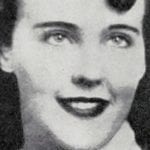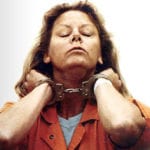 Weird Stuff
Weird Stuff  Weird Stuff
Weird Stuff  Mysteries
Mysteries 10 Tragic Disappearances and Deaths in Joshua Tree National Park
 History
History 10 Ways Childhood Really Sucked in the Old West
 Music
Music 10 Name Origins of Famous Bands from the 1990s
 Religion
Religion 10 Biggest Turnarounds by the Catholic Church
 Weird Stuff
Weird Stuff 10 Unbelievable Times Laws Had Unintended Consequences
 Humans
Humans Ten Historic Women Who Deserve Way More Credit Than They Got
 Movies and TV
Movies and TV 10 Films That Spawned Major Lawsuits
 History
History Ten Times Towns Were Wiped Off the Face of the Earth
 Creepy
Creepy 10 of the Most Disturbingly Haunted Public Houses in the UK
 Weird Stuff
Weird Stuff 10 Niche Subcultures That Are More Popular Than You Might Think
 Mysteries
Mysteries 10 Tragic Disappearances and Deaths in Joshua Tree National Park
 History
History 10 Ways Childhood Really Sucked in the Old West
Who's Behind Listverse?

Jamie Frater
Head Editor
Jamie founded Listverse due to an insatiable desire to share fascinating, obscure, and bizarre facts. He has been a guest speaker on numerous national radio and television stations and is a five time published author.
More About Us Music
Music 10 Name Origins of Famous Bands from the 1990s
 Religion
Religion 10 Biggest Turnarounds by the Catholic Church
 Weird Stuff
Weird Stuff 10 Unbelievable Times Laws Had Unintended Consequences
 Humans
Humans Ten Historic Women Who Deserve Way More Credit Than They Got
 Movies and TV
Movies and TV 10 Films That Spawned Major Lawsuits
 History
History Ten Times Towns Were Wiped Off the Face of the Earth
 Creepy
Creepy 10 of the Most Disturbingly Haunted Public Houses in the UK
10 Family-Unfriendly Facts From The Life Of Dr. Seuss
Behind the poems and the pictures, Theodor Geisel, the real Dr. Seuss, was an adult man with adult thoughts and adult experiences. He created subversive things, was sure he would be remembered as a risque comedian, and lived a life that could never be published between the pages of a children’s book.
10He Was Traumatized For Life By Teddy Roosevelt

World War I was in full swing, and the young Seuss was a plucky boy scout doing his part to help the war effort. He went door-to-door and, thanks largely to a $1,000 purchase from his grandfather, became one of the most successful war bonds salesmen in his town.
Seuss and nine other boy scouts were honored for their efforts. They were brought up on stage at the Municipal Auditorium and presented an award by the president himself, Theodore Roosevelt.
Roosevelt only had nine medals with him—and when he got to Seuss, he was empty-handed. Roosevelt turned to the organizers and angrily barked, “What’s this boy doing here?” They quickly hustled Seuss off the stage and gave him nothing.
For the rest of his life, Seuss had a fear of crowds. Later in life, he lived in isolation on a mountain top. He skipped his speaking engagements, terrified of being publicly humiliated the way he had been as a boy.
9He Was Fired From His College Magazine For Drinking

In the 1920s, Seuss went to Dartmouth. Here, he wrote for the Dartmouth comedy magazine The Jack-o-Lantern and rose to be the editor-in-chief. That changed, though, when Seuss and a few friends were caught slamming back gin in the dorm.
This was more than just drinking on-campus. Prohibition was in full swing, so Seuss was breaking the law. The school didn’t report him to the police, but they barred him from writing for The Jack-o-Lantern.
Without it, Seuss had no purpose at Dartmouth. He kept writing, now under his mother’s maiden name—and “Dr. Seuss” was born.
8His First Book Was The Pocket Book Of Boners

Seuss published his first book in 1931, and it opened to rave reviews. The New York Times called it “hilarious,” and the news wrote about the craze for Seuss’s new book: Boners.
Seuss’s first publication was so successful that it spawned sequels, like Bigger & Better Boners, Prize Boners, and Boners: By Those Who Pulled Them. His illustrated volumes of boners, big and small, were so popular that Seuss compiled them all into his first full-length book: The Pocket Book of Boners.
A boner, of course, is an error—and the books were lists of silly, incorrect answers given by children. It was sourced from children, but it definitely wasn’t made for children. The books were full of risque jokes and illustrations. “When a northern soldier could not go to the Civil War,” one child asserts in it, “he sent a prostitute.”
7He Got His Start Advertising Oil And Pesticides

The pesticide company Flit saw one of his cartoons and hired him to work on their ad campaign. Seuss’s slogan, “Quick Henry—The Flit!” soon became a national sensation, recognized in every household, and even worked into the routines of comedians like Jack Benny.
The cartoons he made for Flit weren’t exactly politically correct. They often involved big-lipped, black-skinned Africans acting like savages. In one, for example, a group of African cannibals are saved by a Flit-carrying European who they were about to make their lunch.
Seuss’s work with Flit got him into the world of advertising. Soon, he was creating ads for Standard Oil and earning enough money to do his own experiments on the side.
6He Made Army Propaganda With Stan Lee And Chuck Jones

When World War II came, Seuss made his way into the army—not with a gun, but with a pen. He soon found himself working side-by-side with Marvel’s Stan Lee, sketching up pamphlets that warned soldiers about the dangers of catching venereal diseases abroad.
Seuss also worked with Chuck Jones, the director behind the Looney Tunes cartoons. He was a part of a team making propaganda videos for soldiers. Their most famous was the “Private Snafu” series, named for the phrase “Situation Normal: All F—ed Up.”
He drew political cartoons as well, encouraging people buying war bonds to “Slap a Jap’s” smile off his face. A lot of these cartoons voiced his support for Japanese internment camps. Seuss was passionate about it. “If we want to win, we’ve got to kill the Japs,” Seuss wrote. “We can get palsy-walsy afterward with those that are left.”
When the war ended, though, he visited Hiroshima and changed his tune. After his visit, he wrote Horton Hears a Who, dedicating it to a man in Kyoto.
5He Only Agreed To Write Kids’ Books So He Could Write A Sexy Naked Lady Book

Seuss had dabbled in erotica before. Earlier, he’d contributed art to The Bedroom Companion, a comic showing a lonely, lust-filled woman stuck on an island with a young boy who protests: “Is it my fault I’m only thirteen?”
He was sure this was his destiny. As a condition of his contract, Seuss insisted they let him write an adult book first: The Seven Lady Godivas, a story about seven naked girls. Nearly every page of the book featured another picture of a naked lady, drawn by Dr. Seuss—in the same style he used in his kids’ books.
The book flopped, and Seuss was forced to settle for a career as a legendary children’s book writer. “I tried to draw the sexiest babes I could,” Seuss complained, “but they came out looking absurd.”
4He Invented The Words ‘Nerd’ And ‘Crunk’
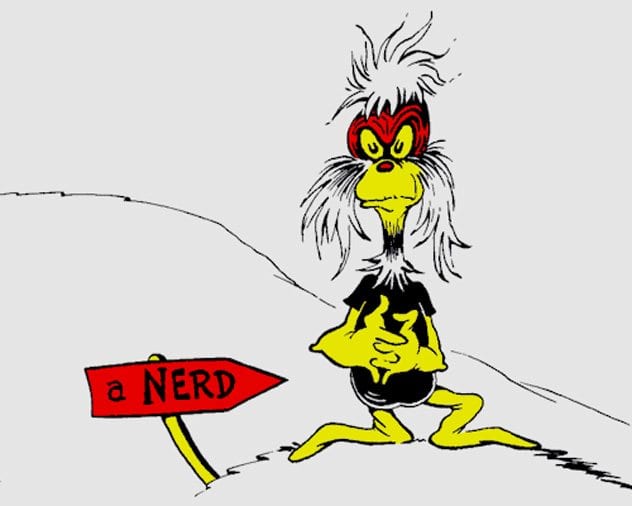
Dr. Seuss holds the unique honor of being the very first person in recorded history to call someone a “nerd.” He slipped the word into his book If I Ran the Zoo, in which a character promises to bring a “nerd” back from Ka-Troo. The use is a bit different, but it’s been theorized Seuss’s made-up word may have been adapted into the insult we use today.
Seuss is behind another slang word: “crunk.” Years before L’il John, in his book Marvin K. Mooney, Will You Please Go Now, Seuss wrote in a suggestion that his character could “go in a Crunk-Car, if you wish.”
Seuss’s Crunk-Car is a massive steam-powered machine with legs, so it’s probably just a coincidence that “crunk” later got worked into hip hop. Still, he’ll always hold the distinction of being the first to put those five letters together on paper.
3The First Draft Of Hop On Pop Taught Kids How To Say ‘Contraceptive’
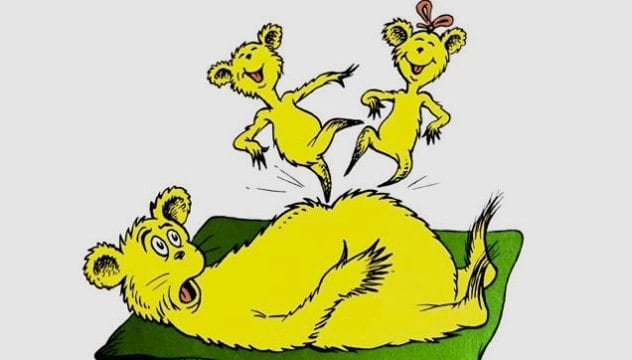
By the time Seuss wrote Hop On Pop, his editors, he believed, would publish anything he had written. Seuss decided to test his theory and slipped a family-unfriendly line into his manuscript:
“When I read I am smart
I always cut whole words apart,
Con Stan Tin O Ple, Tim Buk Too
Con Tra Cep Tive, Kan Ga Roo.”
As it turned out, his editor was reading his work. He got an angry call back shortly after, and the word “contraceptive” was cut from the final draft.
2He Was A Chain Smoker
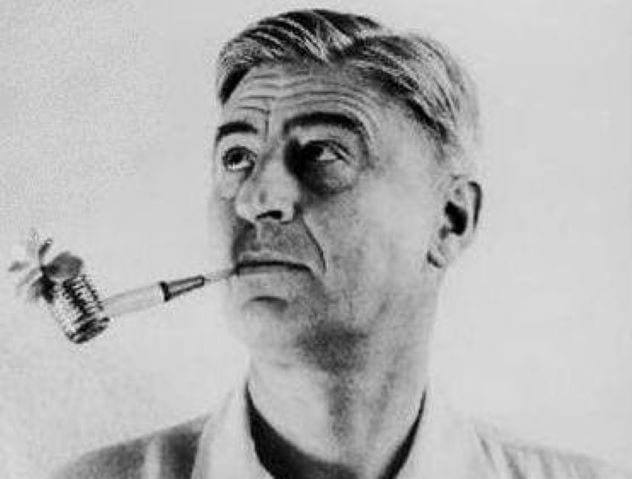
Seuss was a chain smoker and spent many years trying to quit. During those attempts, he would suck on an unlit corn cob pipe filled with either radish or strawberry seeds. He would water the seeds using an eyedropper when the urge to smoke overtook him. When a crop of radish greens or strawberry plants sprouted, he would return to cigarettes.
He repeated this same cycle for years; however, he could never break the habit. Seuss developed oral cancer in 1983 and died from the disease in 1991.
1He Cheated On His Wife While She Had Cancer

Seuss’s wife, Helen, was the reason he became an artist. At university, she encouraged him not to settle for a safe career as a teacher and pushed him to chase his dreams as a cartoonist and writer.
Later in life, though, Seuss cheated on her—while she was dying of cancer. With his wife in the throes of death, Seuss slipped out of the house with a younger woman, Audrey Stone Dimond, a longtime friend of both the man and his wife.
When Helen found out, she was heartbroken. The pain was too much for her to bear—and, in the anguish, she took her own life. Within a year, he married his mistress and stayed with her until he died.



